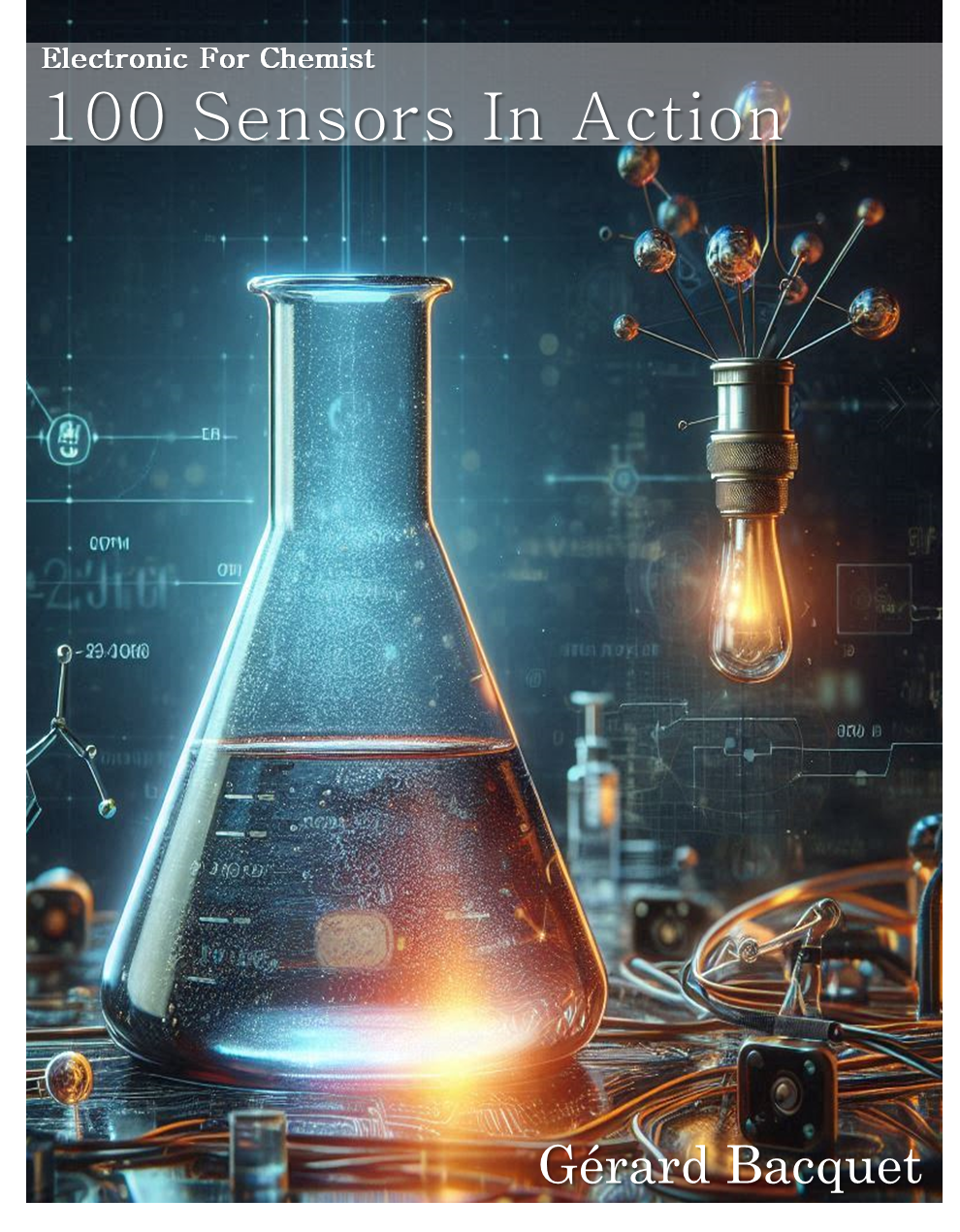
Electronic for Chemists - 100 Sensors in Action
This book is the second in a series of publications aimed at introducing chemists and physicists to the design of laboratory equipment in order to create an autonomous and low-cost "ChemLab". Beyond the economic reason, the main purpose of this project is to serve as an educational support, to initiate a frugal approach to innovation (consumption of less energy or renewable energy sources) and finally to promote the reuse of obsolete components or objects.
Whatever the situation, whether researching, managing processes, observing biological stimuli, measuring physico-chemical parameters, or detecting transitions (such as changes in typical states of solids, liquids, gases or paramagnetism, light transmission, and electrical conduction through percolation), the fundamental principle of chemical reaction management remains consistent with the use of sensors and data management approaches.
Dedicated to the design of sensors and their associated electronic assembly, this book covers the basics of building intelligent detectors in various domains: switches, vibration, direct contact, distance, water and humidity detection, light propagation, refraction and turbidity, organic and inorganic compounds, pressure, bending and load, sound, temperature, magnetic fields, current and voltage.
On the pedagogical side, the knowledge in this book relates to the management of the data generated by the sensor. This can be as simple as amplification, but it can also involve advanced mathematical conversions. Some of these require the use of a controlled board such as Arduino, but in most of the examples used, these mathematical conversions are carried out using an analogue electronic circuit.
Moreover, contrary to the title, which refers to "100 sensors in action", this book contains many variants in addition to the 100 cases studied. Furthermore, the circuits used to manage the data generated by the sensor are not exclusive. We can therefore multiply the combinations to deal with countless situations.
Let's not forget that we cannot expect a chemist to become an expert in electronics and data processing ... However, we can educate him or her in the simple and basic principles. We invite chemists to participate in the open source movements to enrich himself and the community of "hackers" and "doers".
In this sense, this 2nd book has been written in the hope that readers will fill in the missing pages!

